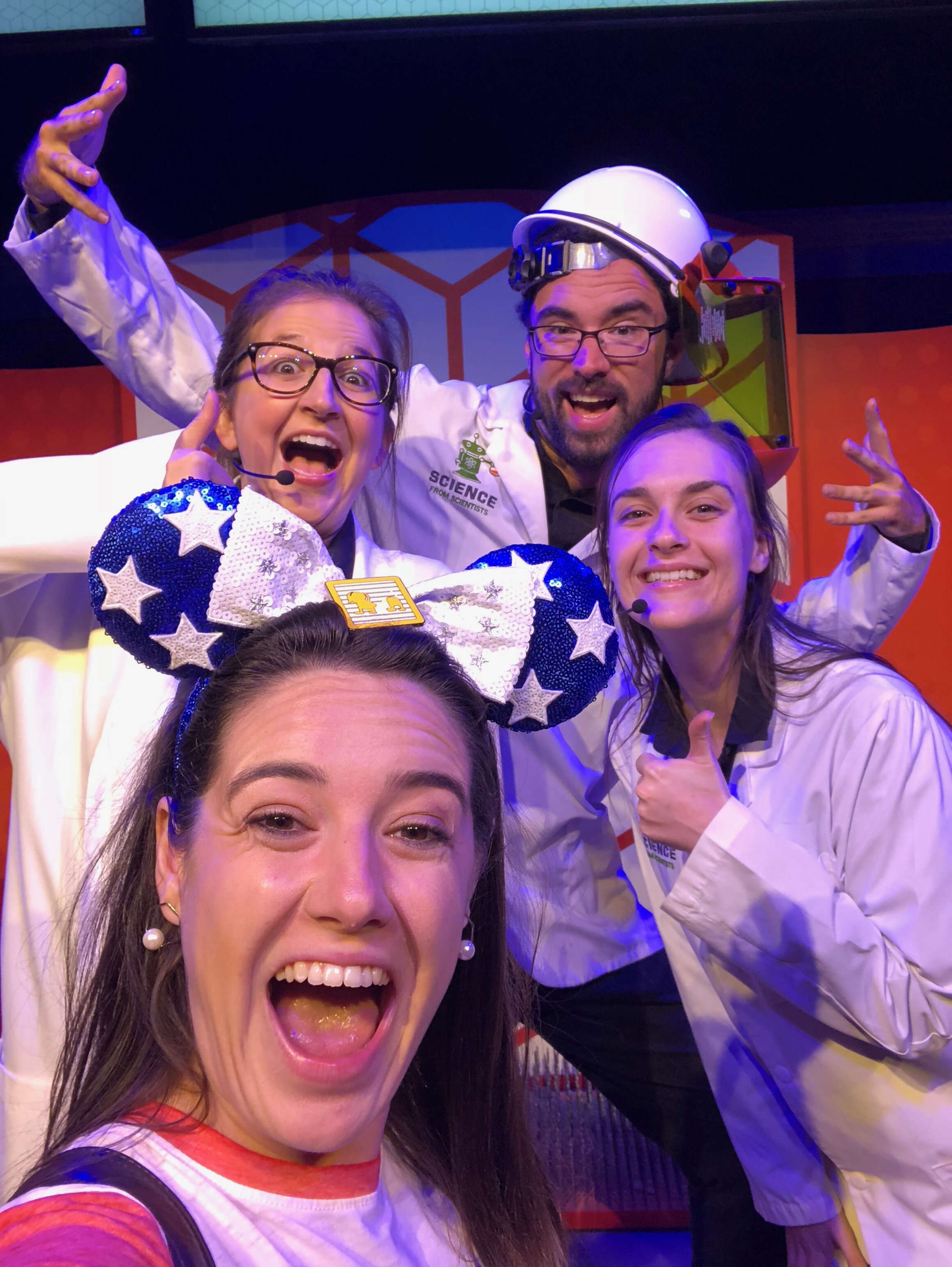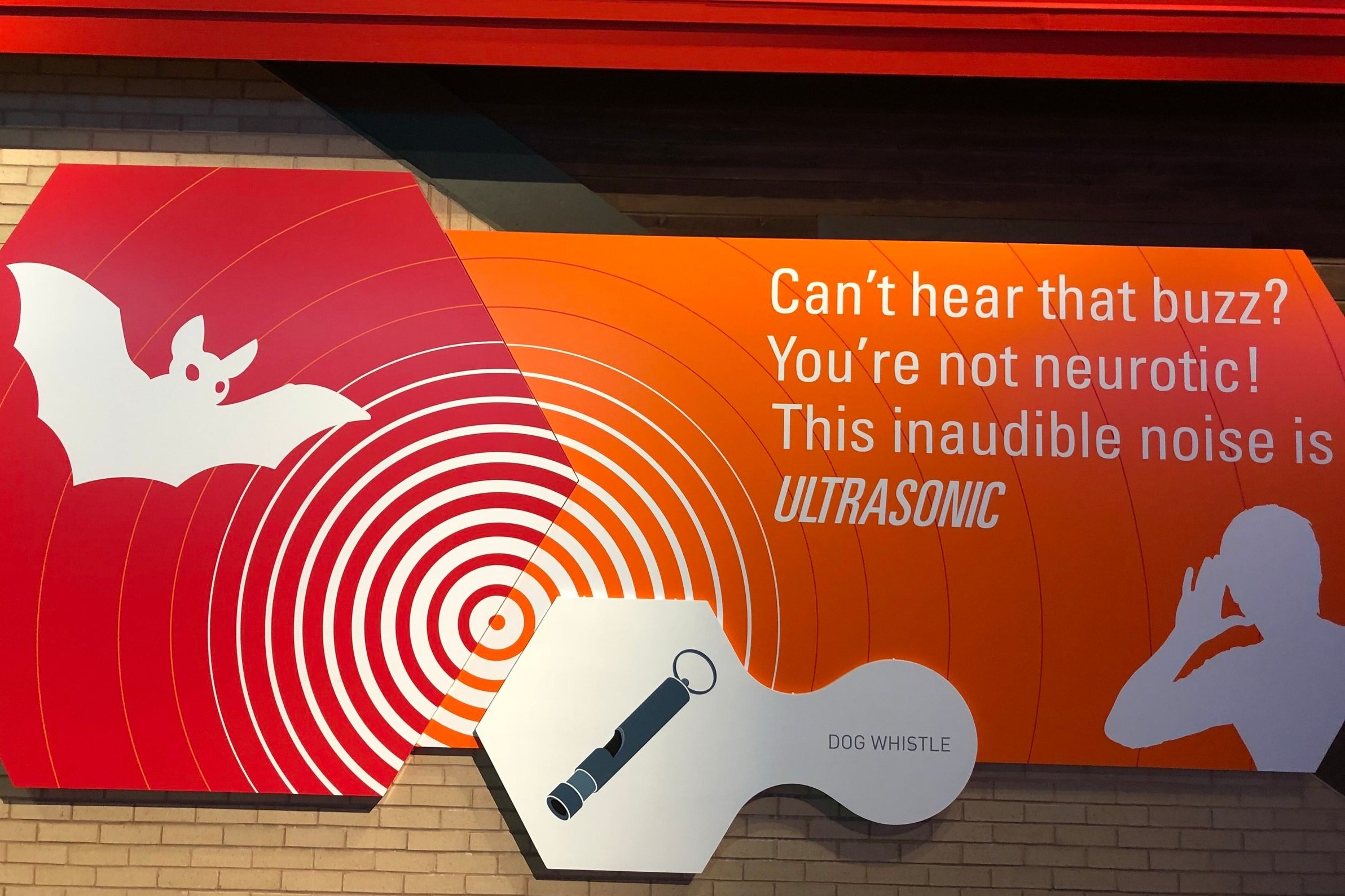How spectacular was Epcot's SpectacuLAB? From a teaching and learning perspective
Only the magic of Disney could turn the demonstration of a few "high-tech" measurement tools into an entertaining, interactive story that might actually be good at teaching kids (and adults!) some simple science concepts.
If you didn't have a chance to see it before it closed, the SpectacuLAB was a 30-minute play about an intern's first day in a science lab learning about the lab's cool technology through "experiments" that involved members of the audience!
In 2018, the SpectacuLAB was sponsored by Murata and most of the actors were real scientists from Science from Scientists, a non-profit that aims to get more 4th-8th grade kids interested in science.
The show aimed to teach force, acceleration, barometric pressure, and sound waves using Murata's accelerometer, pressure sensors, and ultrasonic sensors.
Overall, the show was endearing and fun to watch at least once, but it wouldn't have hurt to incorporate more research-based evidence about learning science into the experience.
The Good
1. The show's scientists are actually good role models for increasing diversity in STEM.
Research has shown that having a personal relationship with a scientist as well as seeing positive images of scientists increases students' commitment to STEM; the SpectacuLAB could have facilitated both of these.
Both times I saw the show, at least one performer was a person of color or a woman (or both!) and kids had opportunities to start to build relationships with these scientists by participating in the show and asking them questions during Q&A.
Although the majority of the audience was likely to be White and there are still many other institutional barriers hindering increased diversity in STEM, this show was a step in the right direction.
2. The show uses effective analogies, both to real-life experiences and across contexts.
To help explain pressure, the show made analogies between ultrasonic sound waves making music to a car's back-up monitoring, and to ears popping on airplanes.
Incorporating students' real-life experiences into science instruction is one of the most highly encouraged practices in the Next Generation Science Standards because it helps students see science all around them.
There were also analogies between several applications of force - smashing one cup, smashing 1000 cups, applying weight to balloons, and laying on a bed of nails.
This kind of careful control of what is being compared highlights what aspects are important for the scientific principle to hold - the distribution of force across a greater area - while downplaying more extraneous aspects - like the materials.
3. The show incorporates Jungle Cruise-esque humor and moments of suspense.
Although the empirical evidence on the effectiveness of humor and suspense on learning is weaker than for other techniques, there is some support that both are effective for creating memorable experiences.
Humor has been shown to help memory (for punny jokes, in particular, see Summerfelt, Lippman, & Hyman Jr. 2010), and increases student motivation.
On the flip side, the fear associated with moments of suspense may also be effective for learning.
Usually suspense and fear are stressful and stress hinders learning, but the SpectacuLAB resolves the highly suspenseful moment of having someone lay on a bed of nails.
Just like when music or horror movies resolve tension, the resolution of a suspenseful moment may help learning because it is a strong emotional experience.
Both humor and suspense affect the dopamine reward system in the brain; linking the memory for science content with happiness from dopamine may help the learner retain the information longer.
The Less Good
1. The science didn't always work perfectly - especially the barometric pressure sensors.
The barometric pressure sensor game was very entertaining to watch but the sensors didn't always change color predictably, which made the game frustrating for the players and confusing for trying to understand the science behind it.
I think this demonstration could have benefited from a screen showing a representation of air pressure in the room to explain what the different colors represent more than just a graph of where pressure is high or low.
Even when the other experiments didn't go according to plan (like balloons popping unexpectedly or the ultrasonic drums being slow to respond), the scientists rolled with the punches pretty well and this provides more opportunity for interrogation of the ideas after the show.
2. The show doesn't allow for enough active learning opportunities.
Although holding a sensor is more active than sitting and watching someone else hold a sensor, this still isn't the most effective way to learn.
Active learning is when students (of any age!) are "engaged in" the learning process. Some examples that have been shown to be effective are self-explanation or even think-pair-share.
Self-explanation - the process by which a student explains their own ideas to themselves through writing or speaking - has been shown to be effective for learning and retention, especially when dealing with multiple representations like in science.
Think-pair-share is a common practice in classrooms at all grade levels in which students first think about their response, then tell a partner, and then share out to the whole class.
These strategies are more effective for learning because they involve more construction of knowledge and questioning of relationships among ideas.
Due to time constraints, these strategies are hard to incorporate in such a short show, but hopefully the show still inspired kids and adults alike to continue conversations about the content after they left the theater.
3. The show could more strongly encourage more scientific practices.
Although the audience was exposed to a fair amount of scientific practices in the show - such as replication of results by repeating an experiment, manipulating independent variables (like stronger versus weaker applications of force), and interpreting data in graph forms - more opportunities could have been built in for practices like making and revising hypotheses, and creating representations.
When explaining force and pressure, there was some encouragement of making hypotheses but this could be incorporated more frequently and more broadly by getting the whole audience to share their ideas with even just a show of hands.
Going along with the lack of active learning strategies, audience members didn't get the chance to demonstrate their understanding in scientist-like ways.
Providing activity pages that encourage them to draw what pressure looks like, or make models about their predictions for additional scenarios could help them feel more like scientists.
Outside of the theater, there are small interactive exhibits that allow visitors to practice more with the ideas from the show in authentic, scientist-like ways but these weren't even mentioned during the show.
What are your thoughts on the SpectacuLAB? Which learning or physics concept would you want to know more about?
References
Tsui, L. (2007) Literature review on strategies to increase the diversity of STEM fields
Humor and learning popular press article
Humor and learning research article
Prince, M. (2004) Active learning
Berthold, K., Eysink, T. H. S., & Renkl, A. (2009) Self-explanation
Gentner, D. & Toupin, C. (1986) Surface similarity hinders analogy






